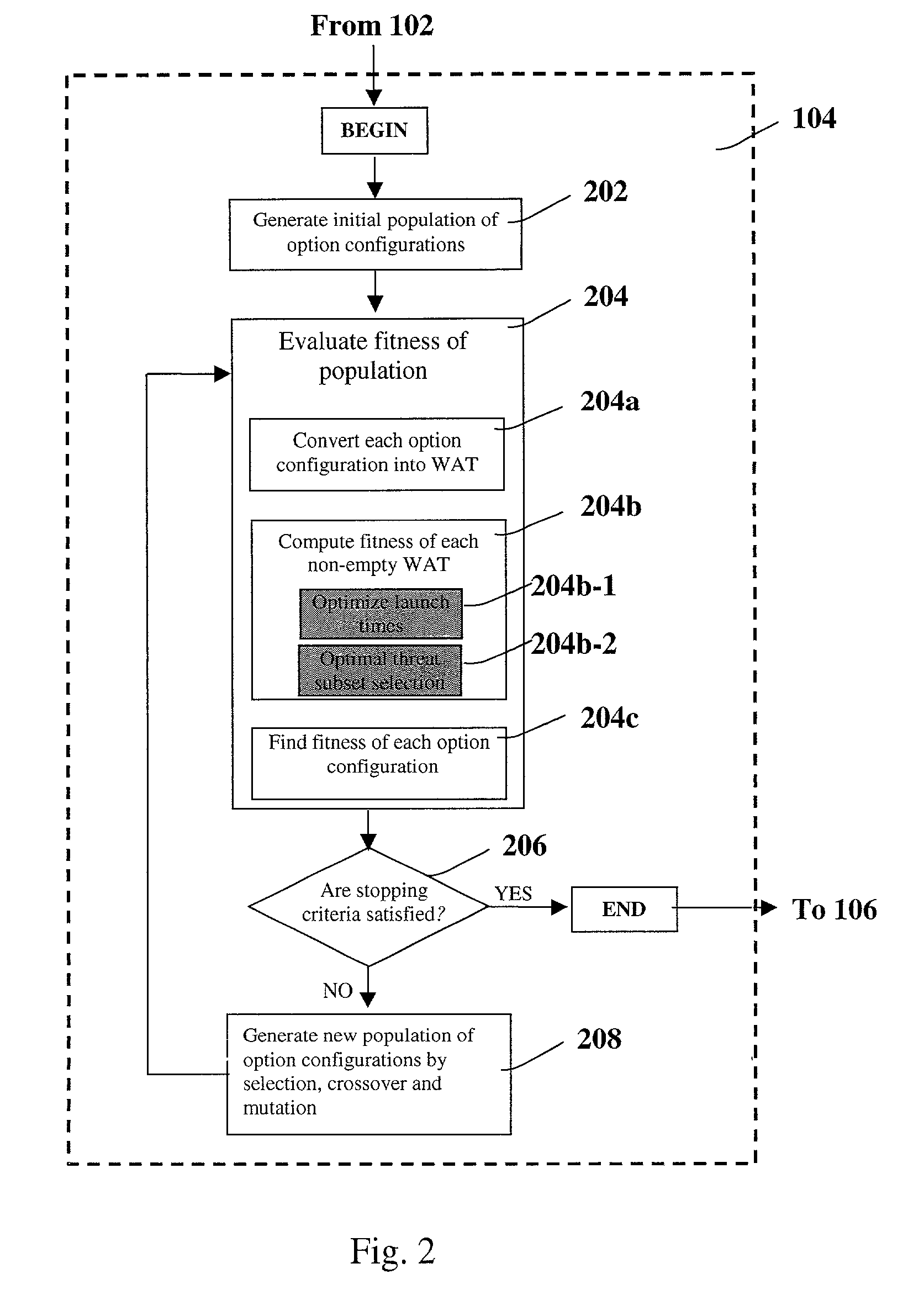Method for automatic weapon allocation and scheduling against attacking threats
a technology of automatic weapon allocation and scheduling, applied in the field of systems and methods for allocating and scheduling resources, can solve the problems of not addressing the issue of when to deploy the weapon system against the threat, rendering some threats unengageable, and the weapon system can only guide a limited number of interceptors
- Summary
- Abstract
- Description
- Claims
- Application Information
AI Technical Summary
Benefits of technology
Problems solved by technology
Method used
Image
Examples
Embodiment Construction
[0023] Illustrative embodiments and exemplary applications will now be described with reference to the accompanying drawings to disclose the advantageous teachings of the present invention.
[0024] While the present invention is described herein with reference to illustrative embodiments for particular applications, it should be understood that the invention is not limited thereto. Those having ordinary skill in the art and access to the teachings provided herein will recognize additional modifications, applications, and embodiments within the scope thereof and additional fields in which the present invention would be of significant utility.
[0025] The present invention describes a method and system for automatically allocating and scheduling defensive weapons against attacking threats to maximize an engagement objective. In a typical battlefield situation at any time, there may be multiple threats headed towards valuable defended assets and multiple weapon systems available to counter...
PUM
 Login to View More
Login to View More Abstract
Description
Claims
Application Information
 Login to View More
Login to View More - R&D
- Intellectual Property
- Life Sciences
- Materials
- Tech Scout
- Unparalleled Data Quality
- Higher Quality Content
- 60% Fewer Hallucinations
Browse by: Latest US Patents, China's latest patents, Technical Efficacy Thesaurus, Application Domain, Technology Topic, Popular Technical Reports.
© 2025 PatSnap. All rights reserved.Legal|Privacy policy|Modern Slavery Act Transparency Statement|Sitemap|About US| Contact US: help@patsnap.com



